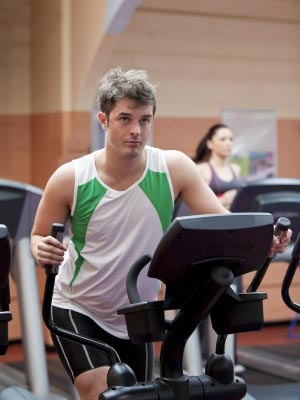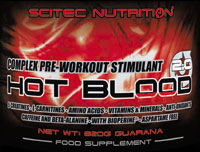Cross trainer - which muscles are being trained?
 Our last article was about cardio training at home with the exercise bike. Now we want you to Crosstrainer for home training. Regular exercise on the elliptical machine is one of the most effective forms of exercise. The cardiovascular system is trained in a similar way to jogging or cycling. Your heart learns to beat more economically and to recover more quickly.
Our last article was about cardio training at home with the exercise bike. Now we want you to Crosstrainer for home training. Regular exercise on the elliptical machine is one of the most effective forms of exercise. The cardiovascular system is trained in a similar way to jogging or cycling. Your heart learns to beat more economically and to recover more quickly.
In addition, cross training also has an impact on the muscles. Studies have shown that when you work out on the cross trainer, 85 percent of the body's muscles are used. This particularly applies to the torso as well as the arms and legs. Because so many muscle groups are involved, cross-training is perfect for problem zone training and to improve posture and coordination.
Cross trainers are very suitable for home training. However, buying a cross trainer is a high hurdle for many people. Because of that Sofimo.de tested five reduced cross trainers here and supplemented with buy recommendations.
These muscle groups are the focus of cross training
Upper arms, shoulder girdle and back
Even if cross training is based on the movement of the whole body in harmony, the upper body sets the frequency and primarily sets the oscillating mass of the cross trainer or elliptical trainer in motion. Depending on the device, this flywheel can be up to 25 kilograms. If the resistance is set to maximum, well-trained fitness and endurance athletes are also challenged.
The resistance is insufficient to produce visible muscle growth in a well-trained athlete. The strength endurance stimulus in cross training is sufficient to gently shape the arms and shoulder area. Fitness beginners in particular can achieve great visual improvements within a few weeks. Through the Supplement the diet with protein, muscle building and the maintenance of the existing muscles can also be promoted.

With the booster Scitec Hot Blood
you can maximize your training success.
Thighs, buttocks and calves
The second hardest part of a workout on the cross trainer is the lower extremities from the base of the calves to the hips. Although the legs do not have to cushion any shocks due to the oval movement during training, the resistance to be overcome should not be ignored over a training duration of 45 to 60 minutes, for example.
Especially the thighs and the buttocks are gently shaped on the cross trainer. Here, too, the greater the resistance when training, the greater the effect. Many women are afraid of "fat legs" when they train on the cross trainer. This fear is largely unfounded. It can happen that the legs gain a little in size due to the muscle growth, but in return the fat percentage decreases. So the bottom line is that your legs don't look less feminine, but just a little more defined. A nutritional supplement can also be used as supportive sports nutrition, which contributes to an improved fat metabolism and so can increase the effect of training in this regard.
Abdominal muscles
The entire torso functions as a kind of relay station during cross training. Because of the cross movements, the abdominal muscles in particular are constantly busy creating balance. Here, too, there is a tightening.





Hello, the cross trainer is actually one of the best fitness machines. Often people tend to go on the treadmill because they think it is better, but the cross trainer is easy on the joints and several muscles are used during training. I also like the possibility of varying the intensity of the individual muscle groups. e.g. Use your arms more in between, then let go of the arm grips completely and only train with your legs. You always get a bit of variation.